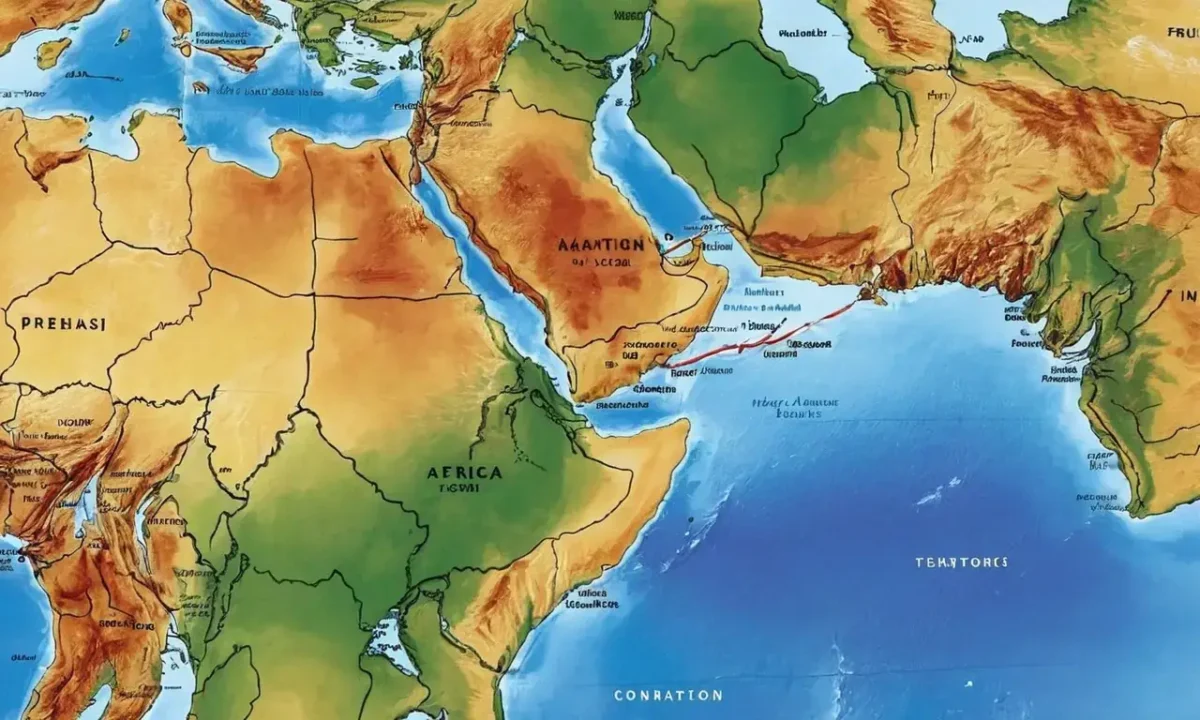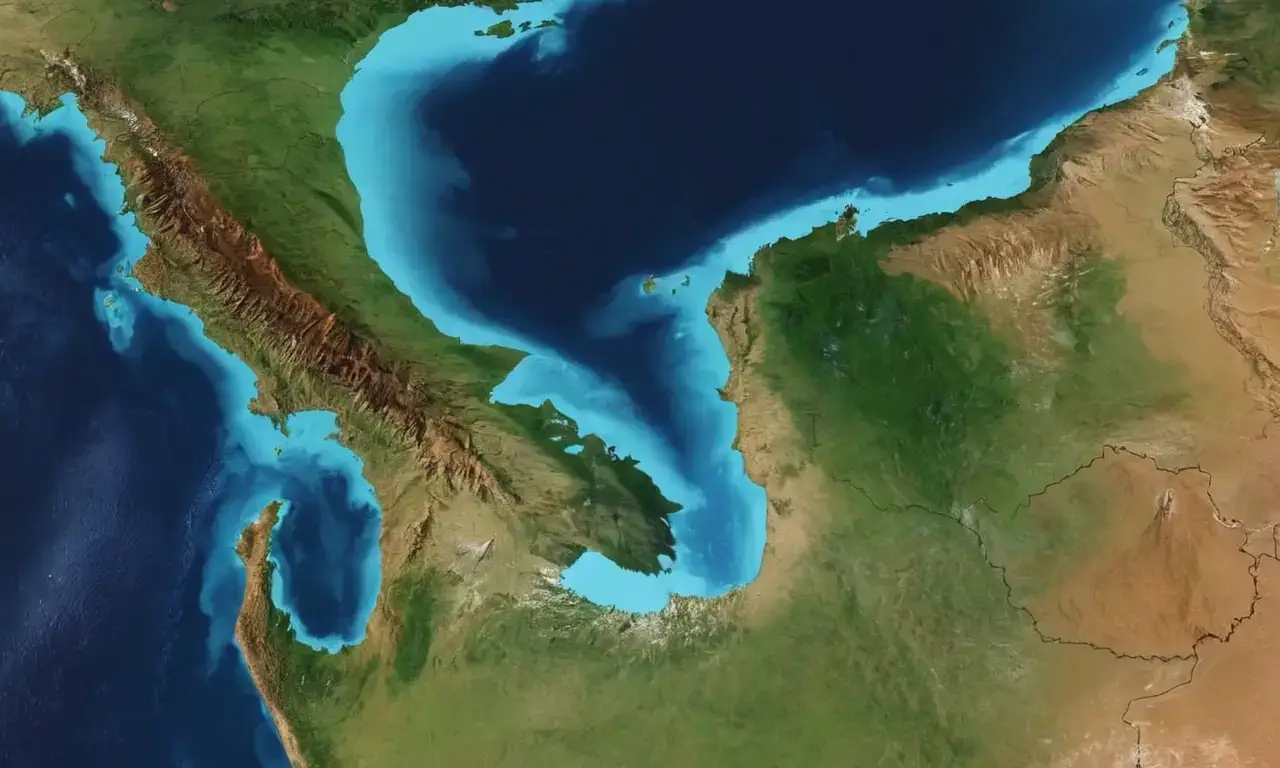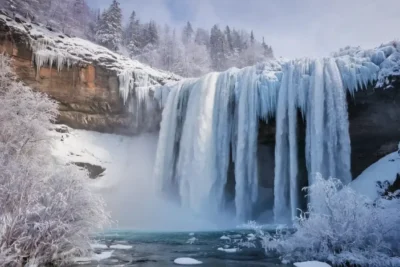
African Plate Tectonics: Reshaping the Continent

The Earth is a dynamic planet, constantly undergoing changes due to its internal forces. These forces are responsible for shaping continents, creating mountains, and even triggering earthquakes. One of the most fascinating processes is plate tectonics, which drives the movement of massive slabs of rock called tectonic plates. These plates interact with each other in various ways, leading to a wide array of geological phenomena. This article delves into the intricate world of plate tectonics, focusing on Africa's unique position and the ongoing process of its continental reshaping.
The primary objective of this article is to provide a comprehensive overview of how plate tectonics affects Africa. We will explore the East African Rift System, which is responsible for the continent's gradual splitting into two tectonic plates. This exploration will include an examination of the potential formation of a new ocean basin and its impact on landforms and countries in the region. Furthermore, we will discuss the geological significance of this process and compare it to the breakup of Pangea, highlighting Africa's place in Earth's dynamic history.
Plate Tectonics and Africa
Plate tectonics is the theory that explains the movement of Earth's lithosphere, the rigid outer layer composed of the crust and upper mantle. This movement occurs due to convection currents within the Earth's mantle, a semi-solid layer beneath the crust. These currents cause the tectonic plates to slowly drift over millions of years, leading to various geological phenomena like earthquakes, volcanic activity, and mountain formation.
Africa is situated on one of the world's most active tectonic zones, known as the African Plate. This plate is constantly interacting with other plates, primarily the Eurasian Plate in the north and the Arabian Plate in the south. These interactions are responsible for many of Africa's geological features, including its diverse landscapes and mineral resources.
The movement of these plates creates areas of tension and pressure, leading to the formation of rift zones. A rift zone is a geographical area where two tectonic plates move apart from each other, creating a gap or depression in the Earth's surface. The East African Rift System is one such example, stretching over 6,000 kilometers across eastern Africa.
The East African Rift System
The East African Rift System is a prominent geological feature that has been shaping the continent for millions of years. This system is characterized by a series of interconnected valleys and depressions formed as the African Plate continues to split apart. The rift system originated in Ethiopia, where the African Plate began to diverge from the Somali Plate.
As the plates continue to move apart, they create a widening gap that allows magma from the Earth's mantle to rise through the crust. This process leads to volcanic activity and the formation of new mountain ranges. In addition to its geological significance, the East African Rift System has also had a profound impact on human civilization.
The rift system has created fertile land for agriculture in areas like Kenya and Tanzania, while also providing access to valuable mineral resources such as gold and diamonds. However, the ongoing tectonic activity in the region also poses challenges, including frequent earthquakes and volcanic eruptions that can disrupt communities and infrastructure.
Formation of New Ocean Basins
The splitting of the African Plate is not only reshaping the continent's landforms but also contributing to the formation of new ocean basins. As the plates diverge, they create a gap in the Earth's crust, allowing seawater to flow into the newly formed depression. This process can take millions of years and has been responsible for the creation of several major ocean basins throughout Earth's history.
One of the most notable examples is the Atlantic Ocean, which was formed as the North American Plate collided with the Eurasian Plate, creating a rift that eventually split the two continents apart. Similarly, the formation of the Mediterranean Sea involved the collision of the African and Eurasian plates, leading to the sinking of the Tethys Sea and the creation of this new body of water.
In Africa, the ongoing divergence of the African Plate is contributing to the formation of a new ocean basin in the eastern part of the continent. This process is expected to continue for millions of years, potentially creating a new sea that will significantly alter the Earth's geography.
Impact on Landforms and Countries

The ongoing tectonic activity in Africa has had a profound impact on the continent's landforms and its surrounding countries. The East African Rift System has created numerous lakes, including Lake Victoria, the largest freshwater lake in Africa by surface area. This rift system also contributes to the formation of new mountains, such as Mount Kilimanjaro in Tanzania, which is one of the highest peaks in Africa.
The ongoing tectonic activity in the region has also led to changes in the coastline of several African countries. For example, Kenya's coast has been significantly affected by the widening of the Indian Ocean, leading to the formation of new islands and altering the country's maritime boundaries. Similarly, Tanzania's coastal regions have experienced significant changes due to the ongoing tectonic activity.
Geological Significance and Future Prospects
The geological processes occurring in Africa are not only fascinating but also hold immense significance for understanding Earth's history and future. Studying these processes can provide valuable insights into how continents evolve over time and what challenges might lie ahead for various countries.
For example, the potential formation of a new ocean basin in Africa could have significant implications for global climate change. As the water levels rise due to melting glaciers and ice sheets, it is possible that this new ocean basin will play a role in regulating global temperatures. Additionally, understanding the geological processes occurring in Africa can help us predict future earthquakes and volcanic eruptions, which are crucial for disaster preparedness.
Comparison to Pangea's Breakup
The breakup of Africa is not an isolated event but part of a larger process that has shaped Earth's continents over millions of years. The most well-known example is the breakup of Pangea, the supercontinent that existed from about 300 million to 175 million years ago. Pangea gradually split into its modern continents, with Africa playing a crucial role in this process.
The separation of Pangea led to the formation of new oceans and landmasses, ultimately shaping the world as we know it today. The ongoing tectonic activity in Africa is similar to the breakup of Pangea, albeit on a much smaller scale. However, the geological processes involved are still fascinating and provide valuable insights into Earth's dynamic nature.
Ongoing Geological Processes in Africa
The African continent continues to experience ongoing geological processes that shape its landscape and impact human civilization. These processes include volcanic activity, earthquakes, and the formation of new mountain ranges. The East African Rift System is a prime example of these ongoing geological processes, with scientists actively monitoring its evolution.
For instance, the rift system has been responsible for the creation of numerous volcanoes in Africa, including Mount Kilimanjaro and Mount Kenya. These volcanoes are not only visually stunning but also play an important role in the continent's ecosystem by releasing gases into the atmosphere. Additionally, ongoing tectonic activity can trigger earthquakes, which can pose challenges to infrastructure and human settlements.
Conclusion
The African continent is undergoing a significant geological transformation due to plate tectonics. The East African Rift System is causing the African Plate to split into two distinct tectonic plates: the Somalian plate and the Nubian plate. This process has led to the formation of new lakes, mountains, and even potential ocean basins in the future.
Understanding these processes not only provides valuable insights into Earth's history but also helps us prepare for future challenges like earthquakes and volcanic eruptions. As we continue to study the ongoing geological activity in Africa, we can better understand how continents evolve over time and what impact this will have on our planet.
Leave a Reply





Related Links